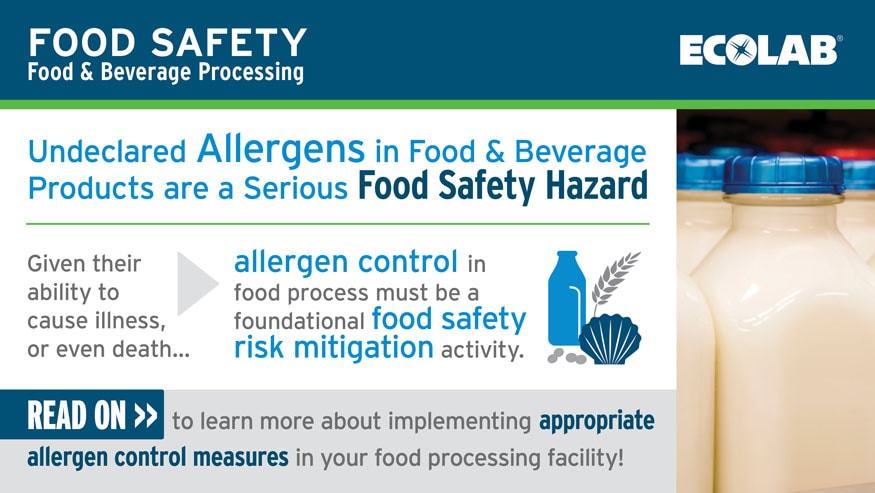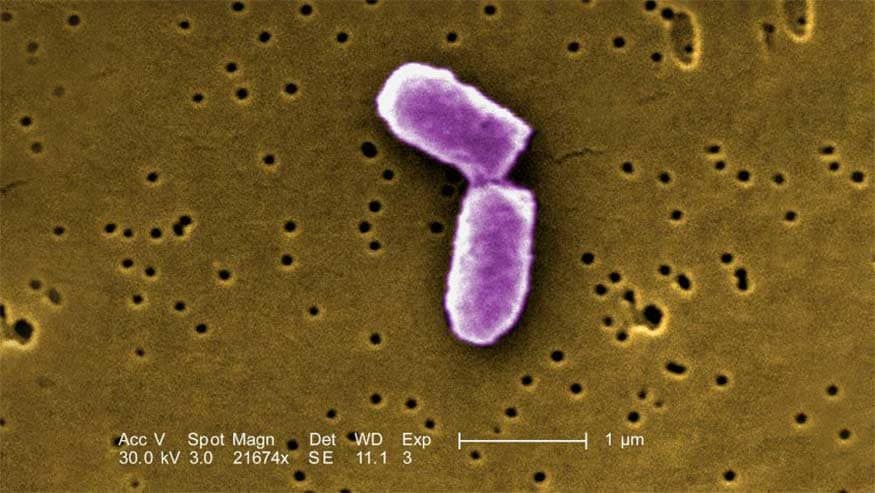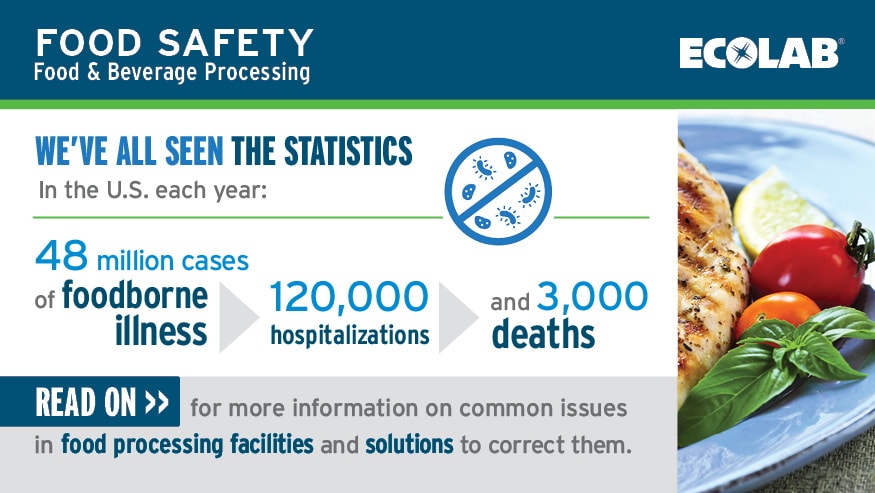Undeclared Allergens in Food and Beverage Products Are a Serious Food Safety Hazard

The numbers are quite staggering. FoodAllergy.org reports that an estimated 32 million people in the U.S. have food allergies. Caring for children with food allergies cost families nearly $25 billion annually. Based in this impact, allergens are often required to be declared on the label of food products. The declaration of specific allergens is country specific. For example, in Canada, there are 11 “priority food allergens” that are required to be declared on food product labels (see side panel). In the U.S., there are currently eight “major food allergens” requiring product labeling. However, just recently, the U.S. passed legislation to add sesame as a ninth major food allergen in 2023. Until then, the U.S. Food and Drug Administration is asking U.S. food producers to voluntarily declare sesame on product labels.
From a food safety perspective, food allergens are considered a chemical hazard. They are commonly proteins that illicit an immune response. The severity of the response can range from deadly anaphylactic shock to an upset stomach to a slight tingling sensation in the mouth or on skin. The onset of illness can greatly vary as well. Effects of an adverse allergen exposure can be felt immediately or take minutes, hours, days, weeks, months or even years to develop.
Given that allergens cause illness, or even death, allergen control in food manufacturing must be a foundational activity for food safety risk mitigation. There are several methods a company can employ to control allergens, and the appropriate allergen control methods will be unique for each product and manufacturing process. A manufacturer must consider all properties of the allergen, product and process when developing and implementing control measures. Considerations for allergen control are:
- Production scheduling
- Sanitation
- Validation and verification
- Color coding
- Employee allergen training
- Allergen cross-contact control within good manufacturing practices (GMPs)
- Employee and product traffic flow through the plant
- Segregated storage of allergen ingredients and finished product
- Allergen labeling of ingredients and products
- Raw material risk evaluation
- Periodic review and verification of allergen control plan
There are four major considerations to limit allergen cross-contact, the term used to describe the transfer of allergen from one food source/surface to another.
|
Food Allergens |
|||
|
United States |
Canada |
||
|
Milk Egg Fish Crustacean Shellfish |
Tree nuts Wheat Peanuts Soybeans Sesame (in 2023) |
Milk Egg Fish Crustacean Shellfish Mollusks |
Peanuts Soy Sesame seeds Mustard Sulphites Gluten source |
Production Scheduling
Plants must build an allergen matrix, which lists products and the allergens they contain. Order of production and necessary sanitation intervention are then based on the matrix. Best control of an allergen would be to dedicate a full production day, or production line, to the product containing the allergen. If dedicating a whole production day, or line, is not feasible, a plant should first produce a product with no allergen followed by a product containing an allergen. The final consideration would involve performing a full sanitation of equipment and if possible, the environment, between products of allergen concern.
Sanitation
Plants should use cleaning activities to remove allergens from surfaces to control or eliminate cross-contact. Since foodborne allergens are predominately proteins, often the cleaner will contain an oxidizing agent to target and remove proteins from food production surfaces. Common oxidizing agents are chlorine and hydrogen peroxide.
Allergens must be controlled through the cleaning process. They cannot be controlled through sanitizing or disinfection, which target microorganisms. Sanitation standard operating procedures (sSOPs) must be validated (i.e., designed to remove the allergen) and verified (i.e., continually shown to work as designed) against declared allergens.
Validation and Verification
While a component of sanitation, validation and verification are usually discussed separately due to their importance. An allergen control program needs to be validated to show it will control allergens for the specific manufacturing process and product and verified that the program is working as implemented and intended. Testing for allergens on food production surfaces is an excellent way to confirm sanitation activities removed allergens from surfaces and that the order of product production limited cross-contact with allergens. There are several options to test surfaces for allergens, with surface swabbing being the most popular and easy to perform. Most allergen surface swab manufacturers have a system which includes the surface swab accompanied with an allergen detection method and an easy-to-read result. Allergen detection systems typically provide results after a few minutes, which will indicate whether the plant has effectively controlled the allergen cross-contact risk (allergen undetected) or need to be re-cleaned (allergen detected).
Color Coding
Allergen-containing ingredients and products should be identified by a specific color (placard, bins, pallet, shrink wrap, etc.). Identifying an allergen by a unique color aids in proper segregation and storage, which helps limit cross-contact within a facility. Equipment and tools also must be dedicated to specific allergens to help limit cross-contact with non-allergen containing product. If equipment cannot be dedicated, then a full sanitation must be performed between manufacturing of the different products. At minimum, tools that handle allergen-containing products or ingredients must be dedicated and color coded to specific allergens. These tools also must be separately segregated and stored to limit cross-contact.
Ecolab food safety experts stand ready to assist you with your allergen control program and can recommend specific cleaning products, procedures and verification activities.
Related Food Safety Content

The Importance of Building a Strong Food Safety Culture
Rick Stokes, technical support manager in the Food & Beverage division at Ecolab, outlines how companies can create a food safety culture to prevent foodborne illnesses.

Sanitation Strategies to Protect Product from Cross-Contamination
In the latest issue of International Food & Meat Topics magazine, Ecolab food safety experts Jeremy Adler, PhD, and John Hanlin, PhD, discuss control strategies to protect food products from pathogens and cross-contamination.

Reduce Common Foodborne Illness Risks
Ecolab's VP RD&E for Food Safety John Hanlin explains food safety and its importance – from foodborne illnesses to good manufacturing practices to practical measures that reduce risk.


